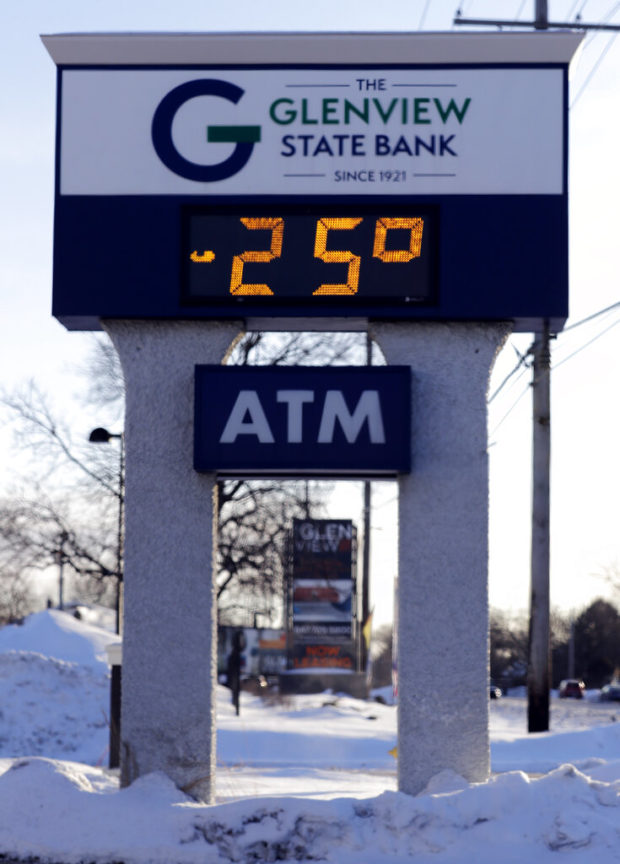Deep freeze expected to ease, but disruptions persist

Credit to Author: ggaviola| Date: Thu, 31 Jan 2019 11:15:53 +0000
CHICAGO – The painfully cold weather system that put much of the Midwest into a historic deep freeze was expected to ease Thursday, though temperatures could still tumble to record lows in some places before the region begins to thaw out.
Disruptions caused by the cold will persist, too, including power outages and canceled flights and trains.
Crews in Detroit will need days to repair water mains that burst Wednesday, and other pipes can still burst in persistent subzero temperatures.
Before the worst of the cold begins to lift, the National Weather Service said Chicago could hit lows early Thursday that break the city’s record of minus 27 (minus 32 Celsius) set on Jan. 20, 1985.
Some nearby isolated areas could see temperatures as low as minus 40 (minus 40 Celsius). That would break the Illinois record of minus 36 (minus 38 Celsius), set in Congerville on Jan. 5, 1999.
As temperatures bounce back into the single digits Thursday and into the comparative balmy 20s by Friday, more people were expected to return to work in the nation’s third-largest city, which resembled a ghost town after most offices told employees to stay home.
The blast of polar air that enveloped much of the Midwest on Wednesday closed schools and businesses and strained infrastructure with some of the lowest temperatures in a generation.
The deep freeze snapped rail lines, canceled hundreds of flights and strained utilities.
Chicago dropped to a low of around minus 23 (minus 30 Celsius), slightly above the city’s lowest-ever reading of minus 27 (minus 32 Celsius) from January 1985. Milwaukee had similar conditions. Minneapolis recorded minus 27 (minus 32 Celsius). Sioux Falls, South Dakota, saw minus 25 (minus 31 Celsius).
Wind chills reportedly made it feel like minus 50 (minus 45 Celsius) or worse.
Trains and buses in Chicago operated with few passengers.
The hardiest commuters ventured out only after covering nearly every square inch of flesh against the extreme chill, which froze ice crystals on eyelashes and eyebrows in minutes.
The Postal Service took the rare step of suspending mail delivery in many places, and in southeastern Minnesota, even the snowplows were idled by the weather.
The bitter cold was the result of a split in the polar vortex, a mass of cold air that normally stays bottled up in the Arctic.
The split allowed the air to spill much farther south than usual.
In fact, Chicago was colder than the Canadian village of Alert, one of the world’s most northerly inhabited places. Alert, which is 500 miles (804 kilometers) from the North Pole, reported a temperature that was a couple of degrees higher. /gsg